Russell Dodgson has been working at Framestore for over 10 years and before taking care of the visual effects of the His Dark Materials series, he worked on projects such as Harry Potter and the Deathly Hallows: Part 1, Black Mirror and Mars.
What is your background?
I originally come from a commercials background and was the Global Head of the Nuke department in Framestore’s Integrated Advertising division for several years. I eventually took on the challenge of working with a small group at Framestore to restart the company’s episodic division around 6 years ago.
What was your feeling to be back on the second season of His Dark Materials?
It always feels great to regroup with a team you are so fond of, it feels like getting the family back together. It was a slightly unique case on His Dark Materials because we knew the second season was greenlit before we started shooting Season 1. The team really wanted to maximise the age range of the Dafne Keen and Amir Wilson so there was a really rapid turn around between the two seasons. In the end we were prepping and beginning filming on Season 2 whilst still delivering Season 1.
How was the collaboration with the Showrunners and the directors?
His Dark Materials has a really collaborative spirit so the experience is always very rewarding. We had the benefit of Jamie Childs returning after Season 1 as our lead director alongside the brilliant Leanne Welham. I work closely with the directors (around the busy shooting schedules) to help plan the best VFX moments we can. We spend time working out how we can execute these moments on set within our schedule and budget. This process is supported by Dan May and his team at the Painting Practice who create the show’s awesome concept art as well as working with us to build out the ideas in previs and postvis.
VFX is such a central piece of the series so the collaboration with the showrunner and the producing team has to be really strong. We spend a lot of time working out where the VFX budget is best used to support the narrative in general whilst also crafting the correct moments to punctuate the episodes with set pieces.
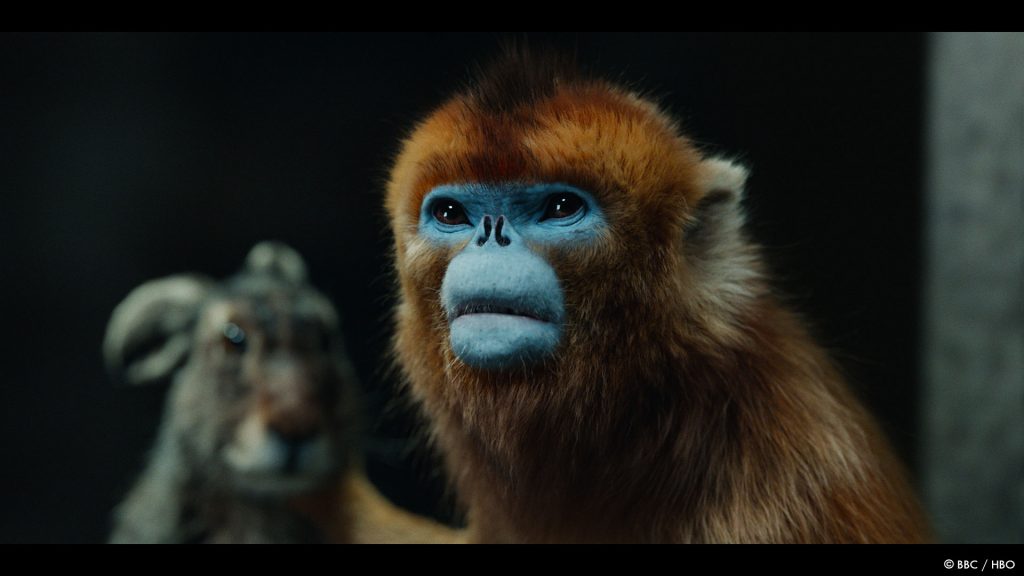
What were their expectations and approach about the visual effects?
We all know there is never enough money to do everything you want, even if the money was five times greater our ambitions would grow to exceed that and we would be back where we started. We had already answered the biggest VFX question of the show “what will the daemons be like?” Between the amazing work by the team at Framestore, the brilliant onset puppeteering and the great performances our principal cast gave us to animate to, we certainly exceeded the expectations for the show’s creature work. The real question of Season 2 was how we keep the feeling of season 1 with a story that shifts tone, location and rhythm so much. Season 1 was more of Lyra’s Odyssey and she travels through new, very different, locations every episode. Season 2 is much more about telling the story between repeating locations across different worlds. We also, to a large degree, lose the bears but replace them with new things. So the main challenge was maintaining the scale of the show but with different ingredients.
What are the main changes that you did since the first season?
To be honest it was very much business as usual as one season flowed straight into the next from a VFX perspective.
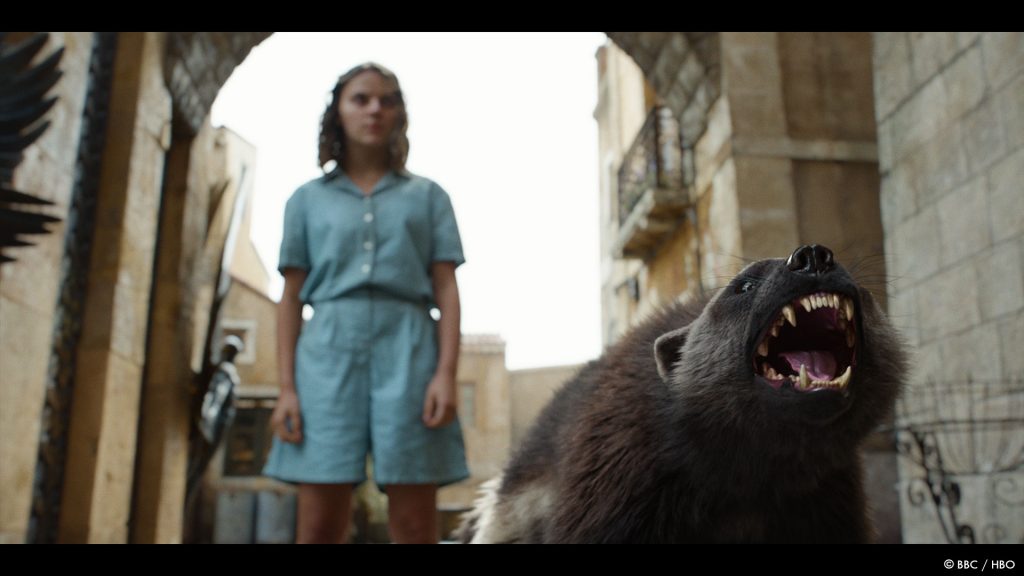
How did you organize the work with your VFX Producer?
We have an amazing VFX production team on both the client side and the Framestore side. Client side I work with James Whitlam and Bryony Duncan along with the rest of our incredible team to break the show down into manageable pieces. When VFX shows get to a certain size you start having to bid in averages as much as at the shot level and they do an exceptional job at that. I tend to go through the scripts and do a “creative pass” where I direct it in my head, ideally with a knowledge of the style of our directors, and turn this into shot counts. At the same time James and Bryony break it down and then we compare numbers and amend, doing it this way really helps as we are “kicking the tyres” on the bid as we go. It is always a bit of a shifting target and so requires cool heads and a robust process.
How did you split the work amongst the Framestore offices?
We always try and keep parcels of work within certain offices to keep the number of split shots to a minimum. Framestore has an excellent multi-site pipeline that facilitates the splitting of work, but even with the luxury of that it is better to keep whole shots with one group of artists where you can. In the end we did a bit more work in London than in Montreal but they were both responsible for delivering some of the shows biggest scenes. London once again took all the Golden Monkey work but was also responsible for the build of Cittagazze and the development and execution of the Spectres. Montreal were responsible for all of our Witch set pieces such as Ruta flying through the storm and attacking the submarine in episode 1. They also created and animated the asset of Pan as a Red Panda which was an exciting new addition and revisited Iorek in episode 3. We also split some parcels of work to some of our other teams. A large sequence in Episode 7 went to our great team in NY and the the observatory sequence and a few others yet to be aired were crafted in our IA team in London, they were also responsible for creating the Lemur asset in episode 3.
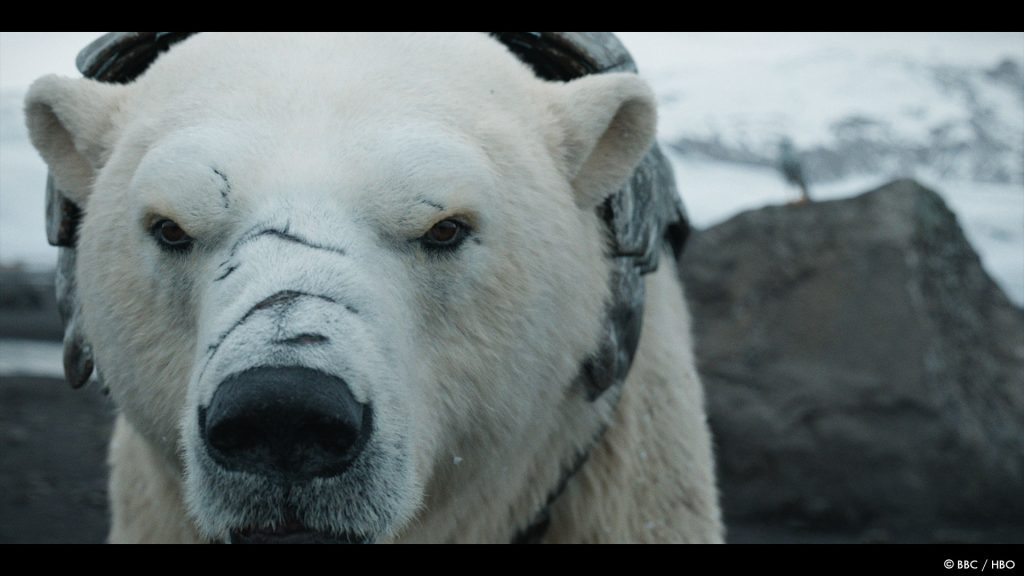
This new season opens in the beautiful city of Cittàgazze. How did you work with the art department for its design?
Joel Collins and the team at the Painting Practice did a lot of work designing the city both internally as well as it’s overall look and feel. They designed it from the overall shape and layout to the iconic staircases that run through the city and the details in the railings and plaster work. Dan and his team at Painting Practice created a version of the town in the Unreal engine which allowed us to quickly see how the shape held up from all angles, heights and distances. Joel always wanted the city to be surrounded by a grand mountainscape that rose from the ocean; at first he was inspired by the mountains in Guilin but then our VFX producer James Whitlam suggested Kauai as he had visited there previously and the Napali coastline offered a perfect subject. So I travelled out there with our plate unit DOP Paul O’Callaghan and we did several days of helicopter shooting as well as some general travelling shots for Lyra’s journey to the city from the Anomaly. Once we returned, Dan and his team then integrated the landscape into the concepts. By the time we got to turn over the concepts team had created a base massing model and a pack of low poly buildings as a guide for the team at Framestore.
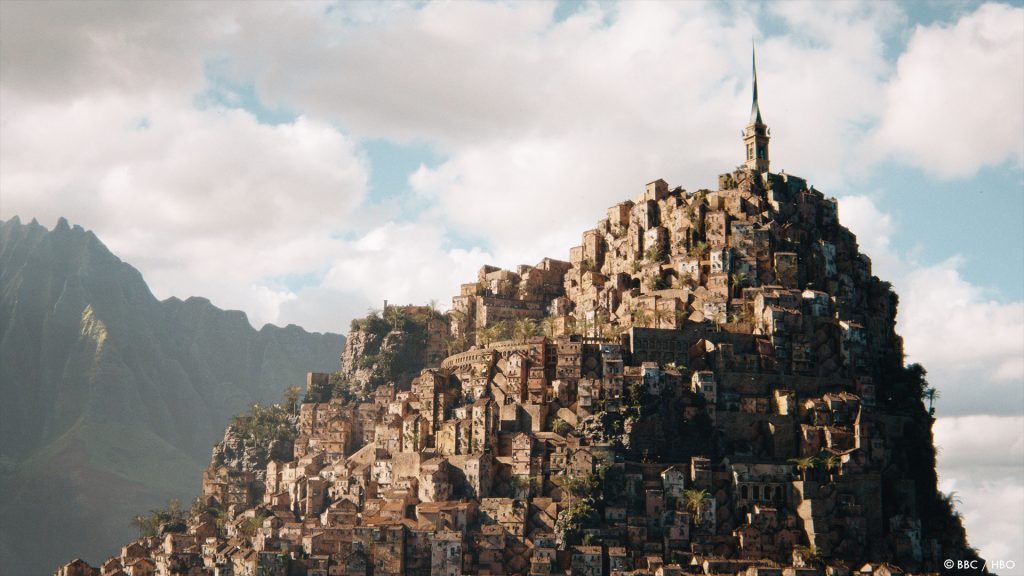
Can you explain in detail about the creation of this city?
Even with all the aforementioned planning and conceptualisation, when dealing with an asset of this scale there is never enough information. Rob Harrington and the environments team led by Deane O’Keefe went to work turning the low detailed design asset and individual buildings into something that looked real both in terms of detailing, shape and texture. Houdini was then used to procedurally add windows, balconies and other details and then final distressing was performed manually in Maya. The shading for the building was a mixture of substance and procedural textures. The team also had to integrate and match the portions of the town that were built for real, the practical set was highly detailed, so they needed to balance recreating that with render efficiency. We use Lidar extensively on set and in post so the high res backlot Lidar was retopologized in Maya and ZBrush. Side FX Houdini was used extensively for layout and scattering of props and rocks. The exposed rock faces were created procedurally in Houdini, trees, vines and plants were crafted from reference in Speedtree and the animation baked in Houdini. In the end the city is made up of over 430 bespoke models which were instanced over 3,380,000 times to create the city. The last stage of shot execution then uses a final beauty paint technique to add final details.
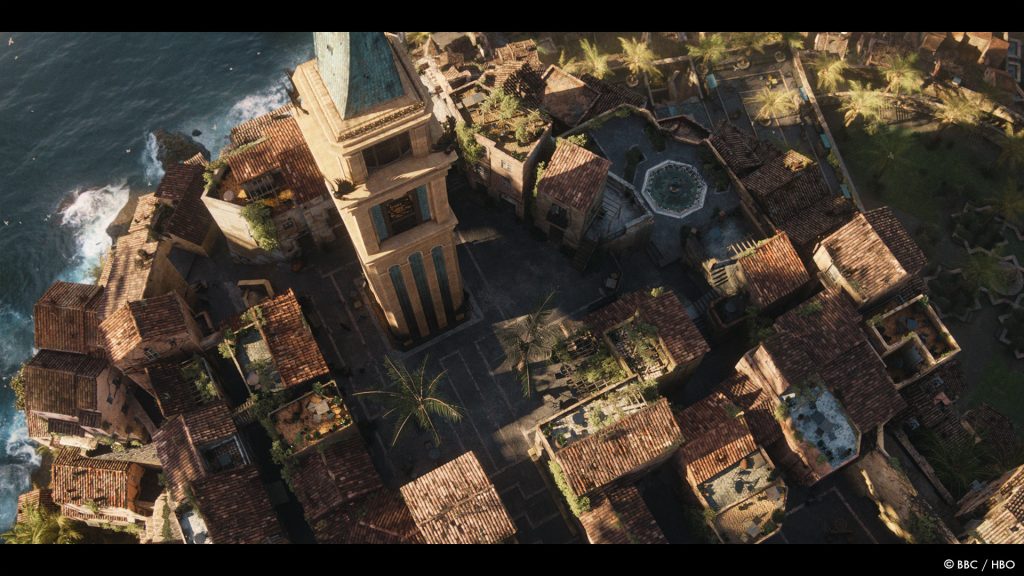
The terrifying Spectres are one of the new threats in this season. What were your references and influences for them?
The Spectres offer up a slightly unique challenge as they aren’t really monsters, they didn’t once live, they don’t speak or eat, they just devour peoples humanity in an impartial way. A lot of the challenge is trying not to be derivative which is hard now so many brilliant, spooky, FX driven monsters have already been brought to screen. We knew that our showrunner Jane Tranter didn’t want the Spectres to be completely black and shiny and they definitely didn’t want a tangible front and back. I referenced underwater creatures a bit but had to make sure we didn’t go too far down that aesthetic route.
Can you elaborate about their creation and the animations?
Due to our fast schedule the FX team opted for a procedural route using Houdini. This allows for a relatively speedy asset development but makes shot execution less predictable (which is the cost). The procedural approach makes the creatures less art directible but leads to some really interesting and often unexpected results. We had a very simple lozenge as our animation proxy that gave us timings, position and rough volume. This was then run through a series of layered procedural simulations that give us the various textures and movements within the Spectres.
The heroes found The Subtle Knife. Can you explain in detail about the FX work when they open a portal for the other world?
This was one of the show’s other challenges. Firstly we had to come up with an aesthetic and logic. We had already set the tone for the way that the journey between worlds and the fabric of the universe is based around “strings”. This was in the finale of season 1 and is in the titles in a big way. The complex thing is that the instrument that cuts them is called the “Subtle Knife” because it delicately cuts a window between the worlds and this was the biggest challenge. When doing portals etc the more you put around the edge of them the easier it normally is to sell in a shot as the edges ground it. In our case we had to work with less as it is meant to be a delicate and subtle thing. On set we had a piece of fishing wire suspended from above for the actor Amir Wilson to interact with. It was easy to clean up, offered him a target as well as some resistance and also something to pinch when closing them. The other tricky thing is deciding where to place the focus of the shot when the windows are small and subtle. If you focus deep through the window then with the shallow focus of the Sony Venice you end up with a sliver of sharpness inside a predominantly blurry frame, which just looks weird and unflattering. The team in Montreal created an FX setup in Houdini that gave us a repeatable look and feel. Then per shot we tweaked the settings to get the desired results.
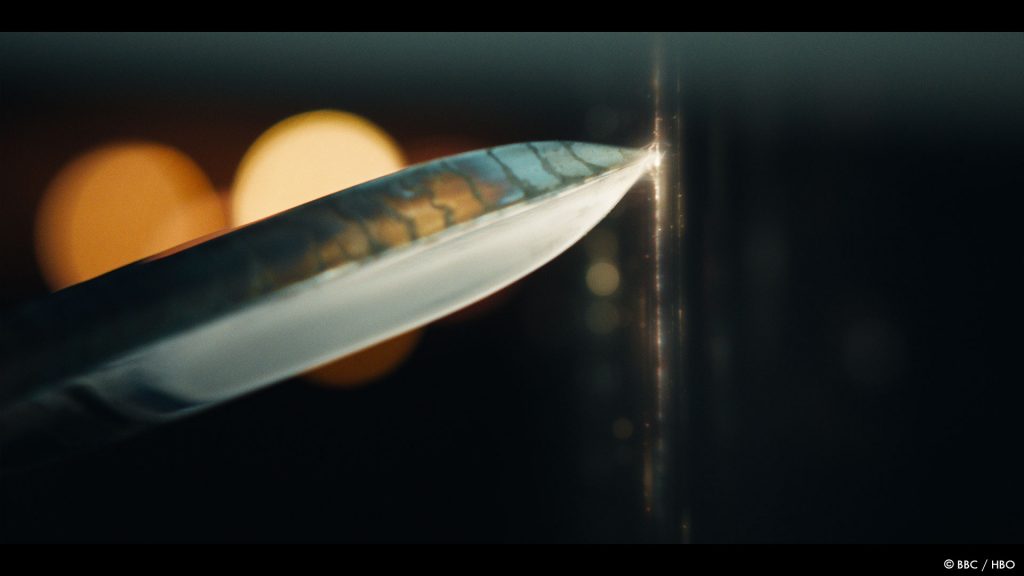
Let’s talk about the daemons. How did you enhance their models since the first season?
For our Season 1 animals we did very little to them as we were happy with the results and felt the budget was needed elsewhere. We put our daemon asset time and money into new characters. We built a Wolverine, Red Panda, Magpie, Osprey, Harris Hawk, Red Kite, Spider, Lemur and a Chinese pond Heron. Many of these assets were for hero sequences so needed to be of a high level.
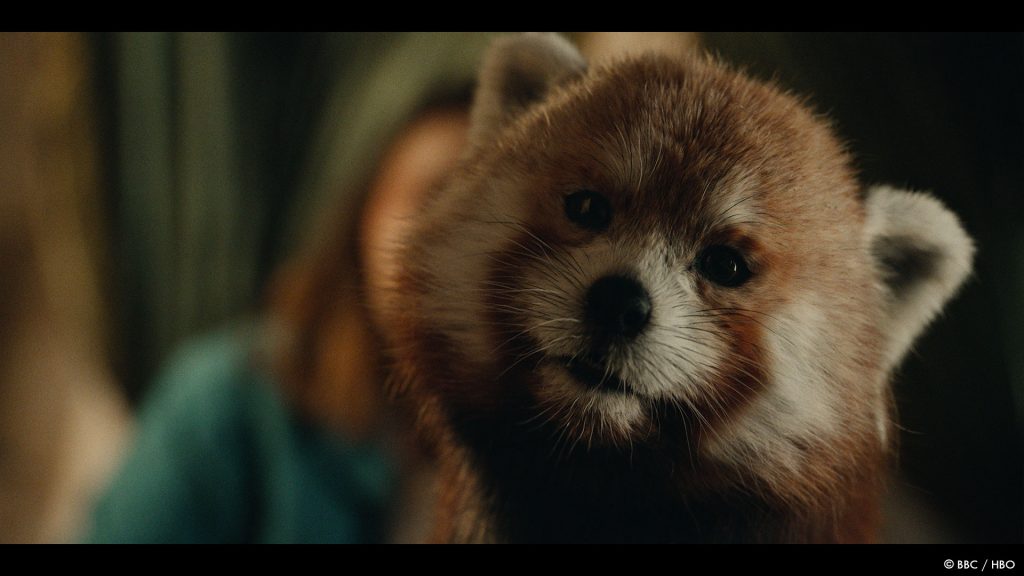
Which daemon was the most complicated to create and why?
The Chinese Pond Heron, that was my gift to the asset team! Birds themselves are particularly hard to create due to the combination of the way the wings fold and the ways the feathers interact when they go from one body shape to another. The Pond Heron threw in the additional challenge of a stretchy neck and strange fur like feathers. We are reserved when we execute the shots to try and work around the moments where wings fold up completely but there is no escaping the scene where the monkey attacks it, beats it up and then hands it over to an equally complex effects monster. If the team is reading this… I’m sorry.
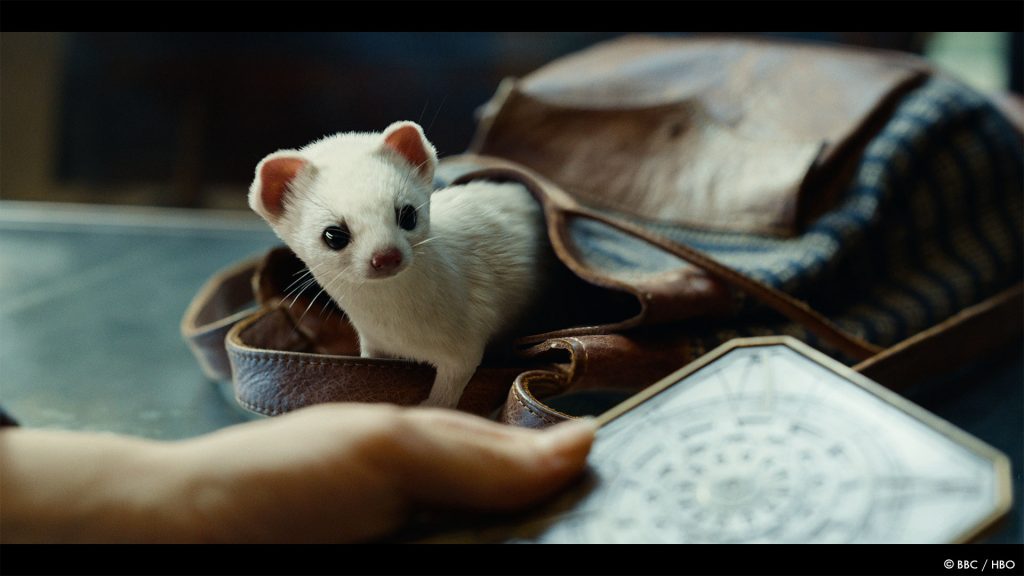
How did you used the previs and postvis for the sequences between the Witches and the Zeppelins?
I really like the back story behind the scene where the witches retaliate against the Magisterium and kill the airship crews before going through the anomaly to Cittagazze. Previously, we had a scene where the Magisterium bomb the witches and were going to have the witches fight back then. Dan May, Jamie Childs and the previs team dreamt up a really nice sequence but then we decided to lose that action beat. A little later we decided to have the witches retaliate in a later episode and Dan May and Jamie suggested that we rekindle the old blocking and fit it to the new scene, it was a cool idea in the first place and ended up even better with the new scene. It was also useful because we had a previs in place for it already.
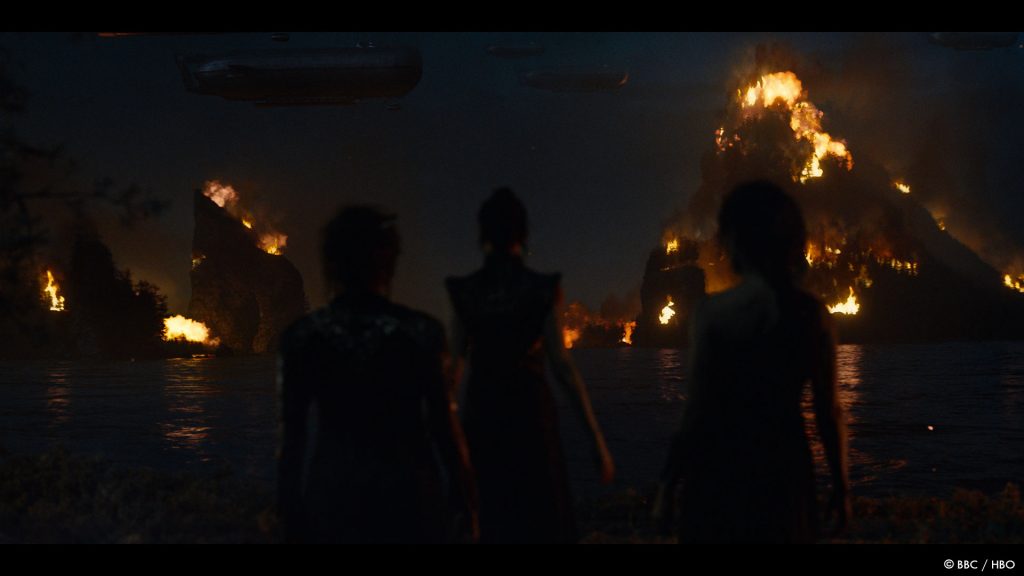
Can you explain in detail about the creation of these sequences?
When we do the witches “bamfing” (moving really quickly through a rush of particles) we try to shoot it as organically as possible. We develop the choreography with the stunts team and a double for the actress and then teach the actress the routine. We then shoot it with the actress stepping through as well as with the stunt team miming their deaths. We also scan and create high level digi doubles of the witches in costume. We then have all the pieces we need to make the witches appear and disappear, augment the body movements with cg but maintain the facial performances. The “bamf” effect is created in houdini and is art directed in each shot.
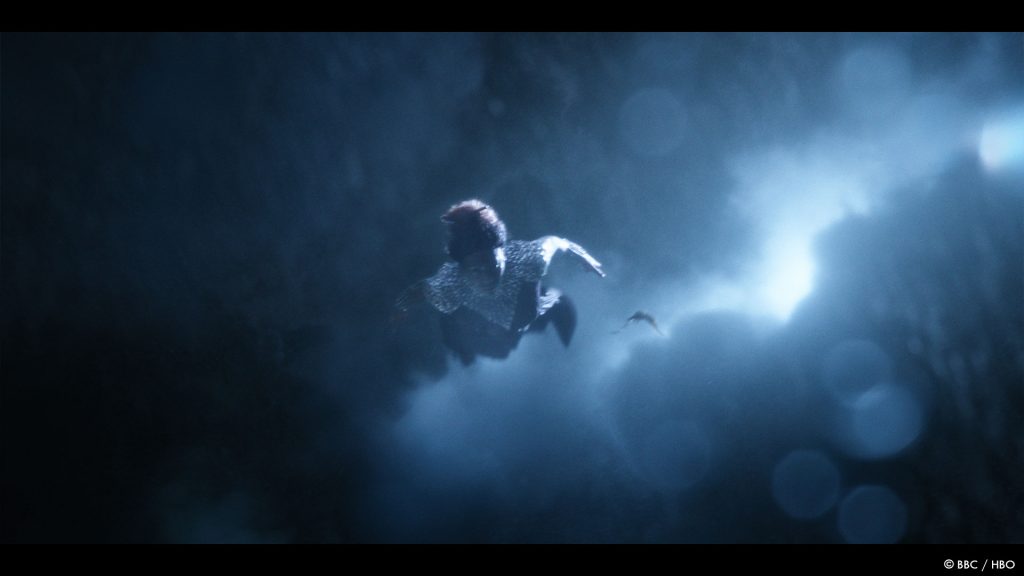
How did you manage so many FX elements for the storm and the ocean?
Our Montreal team did a killer job on this sequence. It was led by VFX Supervisor Stephane Naze and executed by a very talented team. The Painting Practice created a little sandbox in unreal with realtime cloud, storm and rain along with a pre animated witch flying through the scene. They parented a camera to the witch that you could then operate on top of it with a virtual camera in VR. We didn’t actually do much shot for shot previs but it allowed us and the director, Jamie Childs, to get a sense of the energy we were aiming for. The previs team also did some hybrid postvis where they did some traditional storyboarding on top of the renders. From this we ended up with some rushes to piece together and a few moments in particular that we liked. At Framestore VFX Supervisor Stephane Naze and his team picked this up and I briefed them again on the feeling of energy and pace whilst also referencing the previs work. The team in Montreal crafted a fully volumetric 3D cloud system with CG lightning and rain and we worked with our Montreal animation supervisor Fernando Lopes Herrera to get the right flow for witches movements and the cameras relative to them. Once this was done we worked to create a nice visual rhythm of positive and negative lighting, reveals behind clouds, rain on the lens etc. When we do this we also have sound design in mind as we can create opportunities for them in the mix.
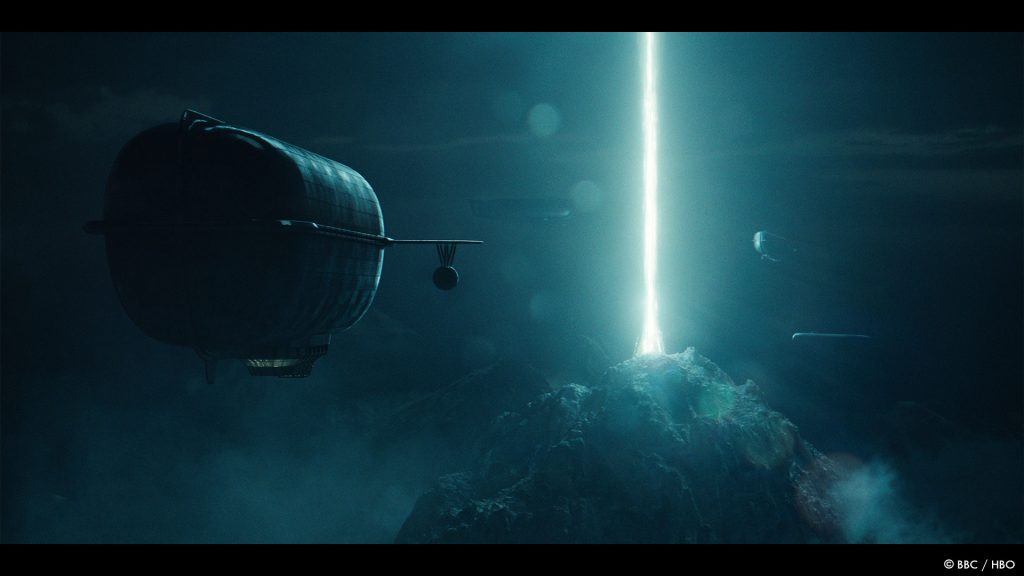
Which sequence or shot was the most challenging?
I think the sequence with Mrs.Coulter learning to control the Spectres was one of the most challenging. The creation of the Spectres alone was challenging as developing a creature that is predominantly simulated and follows very few traditional creature rules is always difficult, especially as the results can be unpredictable. Creating a lot of these Spectres and sitting them convincingly alongside Ruth Wilson’s performance was tricky. Rob Harrington and the team nailed it in the end though.
Another tricky type of shot was our set extensions when we are out in the Cittagazze countryside in episodes 6 and 7. We shot a lot of these scenes on a stretch of set that looked like a ravine bed in a crack in the ground. These cracks were part of Joel Collins’ (Production Designer) vision for the wider landscape. The hard thing here is that it is extremely difficult to achieve naturalistic exterior lighting on interior stage, especially with large sets. VFX Supervisor Christian Kaestner joined us for the last two episodes and really got deep into solving some of these environmental issues. This often involved doing large extensions and replacing spurious looking portions of the set that the light wasn’t falling quite right on.
Is there something specific that gives you some really short nights?
Whether the different teams would achieve the things I just described:)
What is your favorite shot or sequence?
It is extremely difficult to pick one in particular as each scene has so many good memories and challenges associated with it. I absolutely loved planning and shooting the Alethiometer Heist with Leanne Welham as it was a really collaborative experience and translated really well to the edit. I also really enjoyed the scenes that I 2nd Unit Directed as that is always an exciting process.
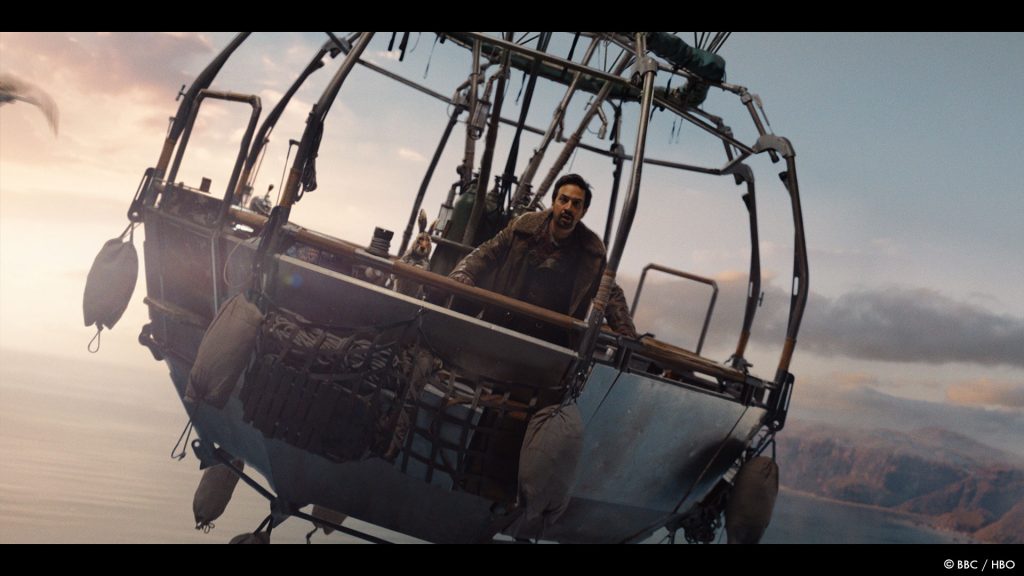
What is your best memory on this show?
Walking around the finished set of Cittagazze, Joel, Robyn and Dan did such an amazing job designing and building it and the end result felt really immersive.
How long have you worked on this show?
Right now I will be entering the 4th year on it.
What’s the VFX shots count?
Around 1400 shots.
What was the size of your team?
It’s tricky to be exact but around 450 artists at Framestore worked on the show across the sites.
What is your next project?
All being well we will finish the Trilogy with Season 3.
What are the four movies that gave you the passion for cinema?
I’m going to mix up movies and TV shows as both influenced me equally. Also I can’t possibly give you THE four but I can give you four that I love.
Friday Night Lights (The TV Show) – This show is amazing, brilliant personal, community drama.
The Life Of Brian – Because it opened my mind to a different type of comedy.
The Thin Red Line – Because it is a visual poem and has a really unique rhythm.
Die Hard – Because it’s Die Hard!
Also, strangely, no VFX movies.
A big thanks for your time.
WANT TO KNOW MORE?
Framestore: Dedicated page about His Dark Materials on Framestore website.
© Vincent Frei – The Art of VFX – 2021




